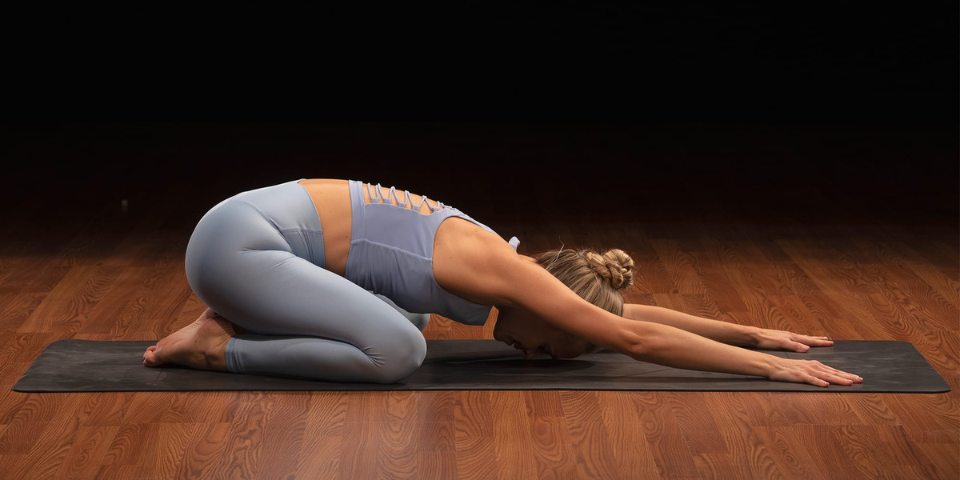I have a secret: I often get my yoga students through “just one more vinyasa” with the promise that child’s pose (balasana) awaits them.
Child’s pose is a relaxing, feel-good pose that’s accessible to yogis of all levels. It’s one of my personal favorites — I swap it for downward-facing dog when my shoulders and legs need a break, I use it to stretch my low back after long hours at the computer, and I remind students it’s always an option when they need to catch their breath or focus inward during class.
Child’s pose is commonly found in restorative yoga, yoga for beginners, and other gentler practices, but it also becomes a welcome break from more intense poses — and I notice my students are often reluctant to leave it.
In child’s pose, you’re basically in the fetal position on your mat (hence the name). When done correctly for your body, few poses feel so good.
Child’s Pose (Balasana): Step-by-Step Instructions
- Start on all fours, with your hands directly beneath your shoulders and your knees hip width or wider. Bring your big toes together.
- Exhale and sink your hips back toward your heels. Rest your belly between your thighs and your forehead on the mat.
- Extend your arms out in front of you (palms down to stretch the whole back) or along your sides (palms up to stretch between the shoulders).
- How long you should hold child’s pose depends on how much time you have and what your body needs. Stay for a few deep breaths up to a few minutes.
How to Make Child’s Pose Easier

Child’s pose should feel easy. But “for some people, resting their torso on the front of their legs makes breathing feel like they’re wearing a corset,” says Stephanie Saunders, vice president of fitness programming at BODi, and a certified yoga instructor.
If you can relate, she recommends opening your knees even wider. (This is also a common modification in yoga for pregnant women.) Here are some other ways to make child’s pose easier on your body:
- For neck discomfort: Turn your head to one side (switch sides every few breaths), or rest your forehead on a blanket or block.
- For tight ankles: Place a blanket under your shins and knees, with your ankles and feet on the mat. Or, try a rolled-up blanket or pillow under the front of your ankle.
- For knee issues: Keep your hips lifted to minimize the bend in your knees, or sit on a block to lift your butt away from your heels. You can also use a bolster under your chest.
- During pregnancy: While safe for pregnancy, yoga poses like balasana require some modifications as your belly grows. Spread your knees wider or use props as needed.
How to Get the Most Out of Child’s Pose

Child’s pose doesn’t get “harder,” per se, but you can control which muscles feel the stretch. Here’s how to intensify, or target, your child’s pose.
- Focus on the upper back: Extend your arms in front of you, then lift onto your fingertips. While pressing them firmly into the mat, lift your elbows, and start to “hollow” your armpits while you round your upper back (as in cat pose).
- Target the triceps: Start with your arms extended in front of you, and press your palms together. Keeping your elbows on the mat, bring your hands overhead or toward your neck. If need be, separate the palms, but press your fingertips together.
- Stretch the lats and obliques: Keeping your lower body in child’s pose, walk your hands off each side of the mat.
Beginner’s Tip for Doing Child’s Pose
Above all, child’s pose should feel restful. “If you’re tight in the front of your hips, the extensors of your spine, or even the tops of your feet, this position can feel like anything but a break,” says Saunders. “Don’t be afraid to use modifications and props until this pose feels comfortable.”
Benefits of Child’s Pose
Balasana is about stretching, not strength, but it offers a number of benefits.
- Stretches and loosens your thighs, shins, knees, hips, ankles, spine, and arms.
- Helps relieve lower back pain.
- Calms the mind and body.
- Provides a rest between challenging asanas.

